Big week coming up! Next week we'll have a midterm in lecture, and some of us will be spending the weekend down at OIT, interviewing for acceptance to the medical imaging program. I know of at least 4 others in the class, and I'm sure there are a few more of you headed down as well. Given that, I thought it might be a good idea to give a few quick thoughts on the interview process, as I went through it myself last year, and many of you have been asking me about the process. I can't give you specifics, as I have nothing like an eidetic memory (thus all the videos
BIO 233 @ PCC - Week 7 Lab - Nora Stevens - Reproductive System - 1 of 2 - HD quality
BIO 233 @ PCC - Week 7 Lab - Nora Stevens - Reproductive System - 1 of 2 - Medium quality
BIO 233 @ PCC - Week 7 Lab - Nora Stevens - Reproductive System - 1 of 2 - Portable quality
BIO 233 @ PCC - Week 7 Lab - Nora Stevens - Reproductive System - 2 of 2 - HD quality
BIO 233 @ PCC - Week 7 Lab - Nora Stevens - Reproductive System - 2 of 2 - Medium quality
BIO 233 @ PCC - Week 7 Lab - Nora Stevens - Reproductive System - 2 of 2 - Portable quality
BIO 233 @ PCC - Week 7 Lecture Notes - Jonathan Christie - Reproductive System
BIO 233 @ PCC - Week 7 Lecture Flashcards - Reproductive System
BIO 233 @ PCC - Week 7 Lab Flashcards - Reproductive System
BIO 233 @ OIT - Week 4 Lab Flashcards - Reproductive System
Jonathan Christie BIO 233 Week 7 Lab video
Video 1 of 2 - Reproduction
Video 2 of 2 - Reproduction
Jonathan Christie BIO 233 Week 7 Lecture video
Video 1 of 5 - Reproduction - Ovulation cycle, hormone interplay
Video 2 of 5 - Reproduction - Explanatory animations for ovulation cycle, hormone interplay
Video 3 of 5 - Reproduction - Case Study intro
Video 4 of 5 - Reproduction - Case Studies
Video 5 of 5 - Reproduction - Mid-term prep
OIT/MIT Interview day prep
Quick links
MIT program homepage
Campus Map - Interviews will happen in the Martha Anne Dow Center for Health Professions, #15 on the map
Q - What is the campus like?
A - It's about twice the size of the PCC Cascade campus, in that it comprises several blocks worth of buildings. It's on the far edge of town, so those of you without transportation who live on campus will need to beg a ride to get to anywhere but Taco Time, Burger King, McDonald's, or Applebee's, all of which are within a few blocks of campus. There is also a very relaxing coffee shop just off campus, and a frozen yogurt place that had just opened up a few months before I returned to Portland. Delicious froyo, but be aware that it is not RbSt-free (for 99% of the population, this isn't an issue - I only know this because my wife has RbSt milk as one of her known migraine triggers).
On the up side, current students can get a free bus ride to town with an OIT ID, about every fifteen minutes during weekdays. Klamath Falls itself is fairly sizable, as it's the only largish city within about an hour in any direction, meaning that most big name stores are present in some form. Albertson's, Safeway, Fred Meyer, Walmart, GameStop, and Ross are all there, for example. Target and Costco are conspicuously absent, however - you'd need to drive an hour west to Medford, and in the colder months (read: 4-5 months of the year), the pass is intermittently inaccessible, especially if you don't have chains.
Q - What is on-campus living like?
A - I'm going to need to break this question down a bit - currently, there are two different sorts of on-campus living; the old dorm building, which is built with the traditional shared toiletries and kitchens, and the new dorm building, which is more of an apartment style arrangement.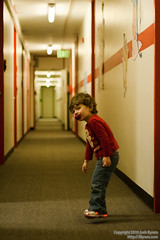
The old dorm building is arranged as a doubled square hallway with three living levels. What this ends up meaning is that if you're not actually living in the old dorm, you'll probably spend your first few visits being dizzy as one of the old pros leads you around. Fortunately, each corner of each hallway is color coded, so once you get the hang of it, it's easy to figure out where you are by just looking at the walls, even though the structures are nearly identical in each level or wing. Boys and girls are in separate wings, which means that visitors of the opposite sex may have to walk a bit to find an appropriate bathroom. Rooms are either single or double occupancy (as I recall, the rates last year shaved off a couple of hundred a term if you went with double occupancy), and there are lounge areas around each stairwell, as well as tiny kitchenettes and study rooms interspersed throughout. External doors are nearly always locked, but residents of either dorm should have a key that will also open the external doors of the other dorm. The main entryway on the first level has a desk that's manned by one of the RAs for most of the day to check out cooking gear, games, etc. Off to either side are meeting rooms, laundry facilities, and gaming room. There's also a projection room in the basement as well as a snack shop. In the center of the facility is an open courtyard that's used for barbequing, and even has a rock climbing wall built in.
Click here for a quick tour of the new dorms
The new dorms are pretty spiffy actually, if a bit spendy - I ended up spending the better part of my year in them, though I functionally lived out in town over the last month or so. Depending on which particular section of the complex you end up in, you'll have three to five flatmates. You end up with your own bedroom (about 10x10 ft, with a relatively thin closet)), which has outlets on each wall, and both a cable and network jack. There are two bathrooms in the suite, so you'll usually be sharing with at least one flatmate - on the plus side, it's a double compartment, with the sink area separated from the bath/shower/toilet, so if your mate is showering, you can still get ready for class. In the center of the suite is a sizable living room area and kitchen, which means it's not a bad idea to confer with your flatmates in advance to coordinate against any possible duplication of kitchen gear, etc. One notable bit that's missing in the new housing is any kind of telephone line - make sure your cell plan actually covers the campus (I can confirm that Sprint works just fine.)
For both dorm styles, there is no control over the thermostat settings, so expect to spend some odd nights in the middle of winter with your windows thrown wide open to avoid frying. On the plus side, nearly all of the sidewalks on campus have embedded geo-thermal heating, so snow build up getting from the dorms to class isn't too bad, even when everything else is bitter cold. In practice, you end up walking through a thin layer of semi-slush a lot of the time.
Pro tip 1 - being the guy that lugs in an extra TV for the shared living room is a great way to make friends
Pro tip 2 - the padding on the sitting portion of the "couches" is semi-adequate, but the arms are painfully hard - bring a couple extra pillows or cushions
Pro tip 3 - the wireless internet signal provided in the new dorms is way underpowered to cover the buildings, and is actually completely inaccessible at either end, rather than just being painfully slow. A $20 wireless router will give you and your flatmates coverage and speed over the entire suite
Pro tip 4 - the beds are the classic extra-long twin size, which means that you probably don't have sheets that will fit already. On the plus side, Target almost always does a special on the bed in a bag thing for just this size in August for around $20 for a full set. The padded portion of the bed is little more than a hard foam slab, so bring a foam mattress topper to make it a bit more livable, and a few extra pillows to fill the enormous gap that inevitably forms between the mattress and the wall.
Pro tip 5 - If you can, grab a Google voice number to give to friends and family, and set it to forward to your current number if answered, google voicemail if not. That way you can set your phone to vibrate during class hours, and still be able to answer text messages/see the transcription of any voicemails from a laptop without disturbing classmates. All of the really good teachers I had while I was down there were more than eager to help students that wanted to learn, but had little patience for interruptions.
Pro tip 6 - Technically, first year students that live in the dorms are required to buy into one of the meal plans on campus. Do _not_ do this if you can help it. I can't speak for any changes that may have been made since I left, but during the year I was down at OIT, buying into the meal plan costs more than simply buying from the cafeteria outright (and the cafeteria isn't open all that much), to the tune of $0.01-$0.03 in spending power for each $0.05 put into the plan. On the plus side, if you've done your pre-requisites elsewhere, that makes you a transfer student, not a freshman, and thus NOT required to have a meal plan. Push on this if you have to.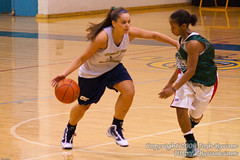
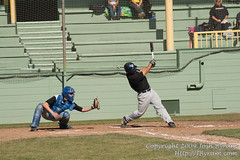


Q - Ok, so what is there to do in Klamath Falls?
A - This comes out on the plus side again, fortunately - since this is the biggest city around for some considerable distance, some entertainment options are available. Both the bowling alley and the theater run specials one night a week, offering discounted tickets/games for students. The recreation committee arranges many activities that are cheap to join on a near-weekly basis, such as day trips to skiing, etc. Events turn up on campus pretty regularly as well, meaning that you might end up with free grub, music, or comedy on any given week.
There are also many on campus clubs as well, including a pretty active airsoft group, retro gaming, and a student-run comedy sketch group that airs on campus once a term. Of course there are many school sports teams to join or watch, and a sizable gym with an indoor pool. For the gaming geek, there's also something of a treat in town - one of the biggest board/card/rpg gaming stores I've ever been in moved in last spring, and both the husband and wife that run it are avid gamers. For nature lovers, there's a small horticultural preserve right on campus near the dorms (I used to spend an hour or so there before my morning classes, just zenning out and waking up), and there's endless hiking and biking around, including miles of pathway along the old Californa/Oregon railway. If you have a car, I would highly recommend visiting one of the numerous wildlife reserves in the area - the lower Klamath wildlife reserve in particular is the most populous site in the united states for observing bald eagles in January and February. Further south, you can visit the lava beds national monument, or you can head a bit north and see some amazingly blue water at Crater Lake. One stop you should make, if you're even slightly fond of Vietnamese/Asian cuisine is the Pho Hong restaurant on 6th street - absolutely wonderful food, and something of a hang out for many students.
Q - What actually happens on interview day?
A - Basically, there are two big sections of the interview - the essay portion, and the oral interview. Technically, everyone signs up for a morning or afternoon interview, but I would highly recommend showing up in the morning regardless, as the afternoon interviewees were able to get their written essays done during that time last year. You might even be able to get your oral interview done early, although I doubt it, as most of the "5 minute" interviews ran to 10 or 15 minutes.
Regardless, this is how it went for me last year, as a person with an afternoon interview scheduled.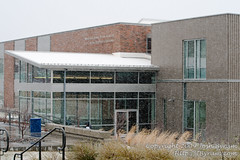
I showed up at the Martha Anne Dow building (Pictured above, #15 on the map) at 8 am, and spent 30-45 minutes just getting through the check in process. Donuts, coffee, and juice were provided on site, for those that were interested and not overly concerned about stains on interview clothes. (I have to admit that I was a bit paranoid and abstained.)
At 9, those with a morning interview were split off from the main group, and about half of the afternoon interviewees were sent to a classroom to start on the written essay. Now, again, I should stress that this is what things looked like last year, and may have no bearing on this year. In any case, the essay portion was just a single sheet of paper, front and back - something like 6-10 questions with room for a paragraph each to answer. The focus seemed to be on making sure that you had an idea of what you were getting in to - basically questions along the lines of describing what each specialty does, how they fit in to the whole hospital scheme, etc. If you took MIT 103 from OIT, the answers they were looking for were covered by the blue packet you got from the bookstore.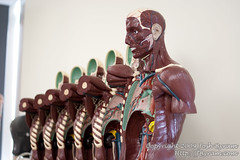
At around 10:45-11:00am, the two halves of the afternoon interviewees swapped places - those of us done with our essays went on a student-led walking tour of the classrooms and labs where the various modalities would be spending the next several years. I have to say that it was both exciting and intimidating - a lot of big, big names in the industry (Techtronics, Xerox, etc.) donate to the college or offer incredibly favorable financing, since OIT is one of the premiere campuses for turning out the top level techs that will be working on their equipment. Functionally, OIT is outfitted better than many hospitals, both in quantity and quality of equipment.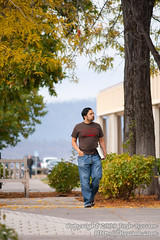
After the classroom tour, we had the opportunity to explore the campus a bit while waiting on the oral interviews. Many of the dorm RAs were available to give a tour of the campus, or you could walk around on your own. One thing I should stress that wasn't immediately apparent from that tour is that the local climate varies a LOT between summer/fall and winter/spring - think about temperature variations that would be more characteristic of the midwest, as opposed to Portland - absolutely frigid half of the year, and muggy heat during the other half, with suspiciously perfect days creeping in from time to time during the spring and fall.
My time for the oral interview ended up being around 2 pm, although we returned from lunch around 1. If you've ever had a job interview, it was very similar. I joined two staff members from the department in one of their offices, and answered a lot of questions that seemed to be directed primarily at determining two things: Was I committed to the level of effort required to succeed within the program, and would I fit in with the rest of the cadre? One thing that many of the people I've spoken to didn't realize from the MIT intro class is that the program is absolutely lockstep with the rest of the people in your modality once you get in. You might end up with perhaps one elective every other semester that you can chose to fill in your graduating requirements, but otherwise, you're with the same classmates for the next two years, in every class. Understandably, this would make social skills a big deciding factor, if it weren't already for patient interaction.
Another point that might not have been apparent is just how much time you'll end up spending on school outside of formal class time. I'm sure that a lot of you have heard the old saw about expecting to spend 3 hours studying for every hour in class, and many of us that are used to getting along with tests may not have had to put that much time in for most classes. The MIT classes are not this way at all - 3 hours per hour of class time would be an absolute minimum, especially considering the amount of extracurricular time you'll spend in labs prepping for practicals. Don't plan on generating cashflow by working while you're in the program, and if you're a single parent, spending the time required may simply not be possible.
The other questions I encountered in the oral interview were more of the standard character/getting to know you stuff - what hobbies/extracurricular activities do you participate in (hint: having an answer that's at least somewhat relevant to your specialty is a good idea), tell us about a mistake you've made/something you're bad at (hint: doesn't really matter what answer you give, as long as you can illustrate that you learned/are learning from it), why are you interested in [your modality] (hint: all you really need to be able to show is that this isn't a casual decision).
One last minute prep that might be appropriate, if you haven't had a job interview recently, or ever, is to stop in at the campus career center and see if one of the advisers would be willing to do a quick run through with you.
In the end, the overall vibe I got from both the written and oral portions was very similar to Professor Christie's tests - that they weren't so very concerned about specific content or presentation (though I would very strongly suggest against showing up in sweatpants or Daisy Dukes, as I saw some other applicants do last year - semi-formal attitude and dress like for a church or social function would be about right) so much as the ability to show understanding and communicate your ideas clearly (keep in mind that a big portion of your future job is going to be interfacing with the public - the ability to use metaphor and simile effectively is going to play in to how you are able to explain things to the general public).
Finally, a bit of bad news, of sorts. Part of the reason I didn't get picked up was my weighted GPA (GPA calculated just from Anatomy and Physiology 231-233, Medical Terminology, Chemistry, Trigonometry, and MIT 103) - due to the economy, OIT was semi-flooded with applicants last year, and probably will be again this year. I've heard that the program has picked up students with a weighted GPA in the C range before, but that was with a stellar interview and extenuating circumstances. I didn't hear of anyone getting in with a weighted GPA below 3.5 last year, and I would assume that the bar would be in that range again this year.
In any case, that's about all of the questions I can think of that I've answered informally about the process - drop me a line or a comment here if you have another question that I might be able to answer.
skip to main |
skip to sidebar

JB School
A brief, ongoing transcript of a returning college student.

Permanent Study Links
FlashcardExchange - All flashcards I've generated and posted
Youtube videos - All videos that I've uploaded to Youtube
Youtube videos - All videos that I've uploaded to Youtube
Other Blogs I Contribute To
Josh and Eden - Our family blog



0 comments: